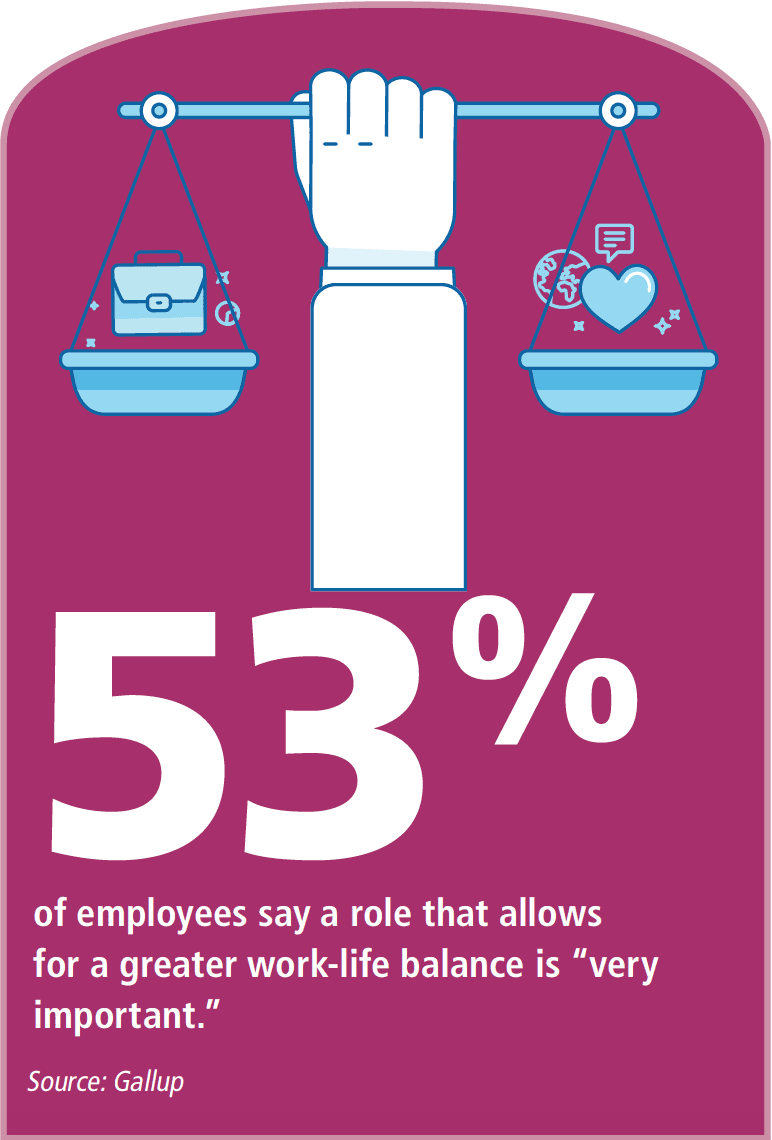HR leaders need to remember there’s a reason why their job titles include the word “human.”
By Elissa Barrett
HR professionals are often at the forefront of listening and learning from peers, leaders, and employees. They are the gatekeepers of the candidate experience and the ones that employees approach to talk, vent, share, laugh, and let’s face it: cry. And through those conversations, the gathering of data without conscious awareness occurs.
Those data points are a gift, and one that needs to be cherished. This information provides the knowledge of what employees are looking for from the companies they work for, but also what they need in order to balance life and work while performing at their best. In order to successfully deliver on that promise, HR needs to consider the human side of human resources in efforts that drive decision-making when it comes to benefits selection, policies adjustments, and supporting employees.
How can this be done?
Humans talk. Start by listening. When companies scale, especially globally, employee demographics change, as do the conversations. With every year that goes by, employee needs and what they expect or want from work changes or evolves. For example, at HubSpot, not many employees asked about parental leave about three years ago. A few employees would mention a desire for longer leave, but the majority of employees weren’t looking for it because they weren’t growing their families -yet. Fast forward a couple of years and the conversation has changed. Now, employees are in different stages of their lives and are looking for support around parental leave. Hubspot extended primary caregiver leave from 12 weeks to a minimum of 16 fully-paid weeks depending on the country the employee works. The policy includes six weeks of fully-paid secondary caregiver leave to all employees globally. Plus, the company extended the fertility coverage to subsidize voluntary egg harvesting and freezing for women over the age of 32 globally.
On the human side, HR needs to listen. The data that is gathered from different conversations with employees should be captured to understand what they want and what they don’t want. Patterns emerge and it makes it very easy to understand quickly where to steer changes when it comes to benefits or policies.
Humans work here. Treat them like humans. The golden rule of “treat people how you want to be treated” is simple, yet an approach that exemplifies the human side of human resources. When employees are taxed with life events that are happening outside of work, either expected or unexpected, organizations should ensure they are treating others with kindness, respect, and support. HR’s role is to be a champion in ensuring that employees are treated fairly, with a balance of kindness and respect.

Humans need flexibility. Get out of their way and it will pay off. The conversation around work-life balance with an employee often pivots into an understanding of what an employee needs in order to fit work into life. It can also kick off a better understanding of what employees need in order to do their best work. Assuming that a traditional work week is doable for everyone just isn’t realistic. For example, a newly single parent may benefit from coming into the office a little later than others to accommodate school drop-off. Another employee taking care of elderly parents might need to adjust their hours in order to commute or be available for appointments. Someone who is going back to school to finish a degree might be able to finish sooner if they could take just one class during the day. In some cases, life and work become a juggle and humans need flexibility in order to succeed in balancing it all.
At HubSpot, employees are asked about the type of schedule that would work for them. With a human approach, asking simple questions such as this can help HR understand what employees need to bring their best selves to work. Being flexible on when and where employees work, when possible, allows employees to do their best work. By bringing in the human side and offering flexibility, employers are rewarded with employees who are engaged and delivering versus employees who are distracted by external pressures and responsibilities.
For 2019, it may be time to go back to the basics and bring back the human side of HR. So this year, when making decisions, pivoting policies, or considering how the workforce has changed, remember that there’s a reason why HR’s job titles include the word “human.” HR leaders are the ones that can help make the difference.
Elissa Barrett is vice president of HR at HubSpot.














